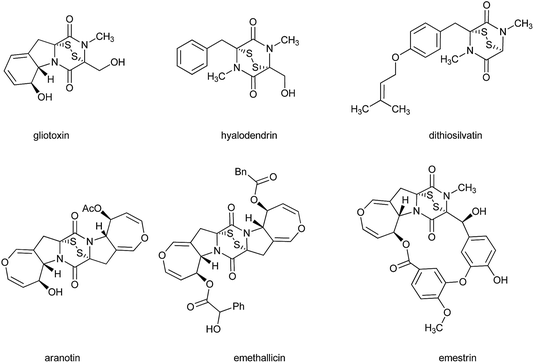Editorial: ChemSpider – a tool for Natural Products research
A library of compounds and related information that you can search and extend.It probably seems really obvious, but looking across this journal and the wider field – no matter whether a publication is focussed on understanding the biosynthesis of a product or the isolation and identification of novel compounds – the key concept that runs through all the articles is an obsession with chemical structures. It might not be a revelation, but I highlight it only because it is so innate in this community's science that it is easy to take it for granted. And in the end, no matter how exotic, unpronounceable or difficult to spell a natural product name might be, or whether it comes from the depths of the sea or a remote jungle, a microbe or a 100 ft tree – I'd guess that if you read a compound name like C-1027 chromophore-V1 you would probably ask yourself:
What is the structure? How would I make that structure? How does nature make that structure? What are the common structural motifs in that family? What are the key features of this structure that give this compound its activity?
And it is the integral role of structures that is driving the Editorial Board and the Royal Society of Chemistry to look at how we can do more to discover, link, and make accessible the chemical data within our publications. The fantastic thing is that in our ChemSpider database we already have an established portal for exactly the kinds of data that the Natural Products community is generating and looking to find.
Get more from the work you put into drawing structures
Already, through text-mining and our databases (Natural Product Updates, MarinLit) we are adding structures, names and other relevant data into ChemSpider. But we want to do more. A review of Natural Product Reports issue 1 2015 reveals over 430 complete drawn structures (i.e. not Markush representations), many of which also have associated systematic or trivial names. This is a wealth of information, and we'd like to ask you to help make this even more discoverable and valuable by supplying a small amount of additional information with your manuscript, which will allow us to deposit some of the key structures into ChemSpider. This leads us to ask you, our authors,2 to help us make the most of the hard work that you put into researching and drawing your structures. | ||
| Fig. 1 An example of high quality structures and associated names, excerpted from DOI: 10.039/c3np70097f. | ||
To achieve this goal, we request that when submitting an article for publication you also consider submitting an additional file in the format your structure editor generates (cdx, mol, etc.) that contains a number of representative structures from your paper – as a guide between 5 and 10. In addition, files should meet the following criteria:
(1) The file name contains the word ChemSpider.
(2) The structures selected are not defined using Markush representations (i.e. please avoid structures with R-groups).
(3) The structure doesn't contain rings which have stereocentres that are defined by use of axial/equatorial orientation.
(4) If possible, that you supply the name of the natural product with the structure.
These guidelines will ensure that we have the data in a format that we can quickly and reliably enter into ChemSpider.
What will we do with this data if you can supply it?
We will deposit the structures and names together with the reference of your Natural Product Reports article. The names and structures help us to enrich ChemSpider so that searches and records get better – but more than that, anyone looking at these records will be able to see the citation of your review, aiding the discoverability of your work.ChemSpider as an aid in your ongoing work
If you haven't taken a look at ChemSpider recently we would encourage you to visit the site again. There are many aspects of the site that are well suited to the kinds of tasks and problems that you probably encounter on any given day, including:• Resolving multiple names relating to one structure.
• Clarifying ambiguity in structures or associations of names with those structures.
• Finding a structure and then exploring any known stereoisomers of that structure.
• Substructure searching.
• Complex searches combining fragments of structures and a molecular formula.
• Obtaining depictions of chemical structures to use in papers or presentations.
With this in mind, we have prepared a number of blog posts and videos that are created with the natural products chemist in mind and will show you some new ways of using ChemSpider to benefit you and your research.3
Richard Kelly
Editor, Natural Product Reports
Richard Kidd
Publisher, Data and Databases
March 2015
ChemSpider – E-mail: chemspider@rsc.org.
References
- K. Moon, C.-H. Ahn, Y. Shin, T. H. Won, K. Ko, S. K. Lee, K.-B. Oh, J. Shin, S.-I. Nam and D.-C. Oh, New Benzoxazine Secondary Metabolites from an Arctic Actinomycete, Mar. Drugs, 2014, 12, 2526–2538 CrossRef PubMed.
- ChemSpider will accept appropriate content relating to older publications with the RSC or non-RSC journals – if you wish to get involved please contact us at E-mail: chemspider@rsc.org.
- http://blogs.rsc.org/np/category/chemspider/ .
| This journal is © The Royal Society of Chemistry 2015 |
